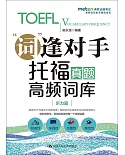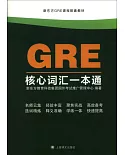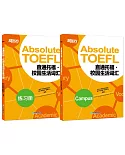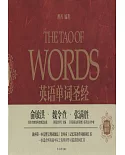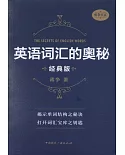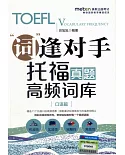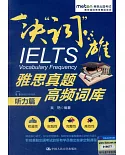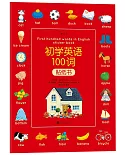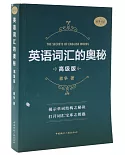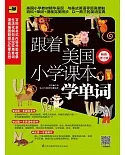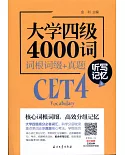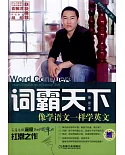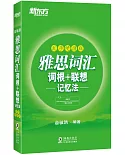不僅僅是一本車輛工程專業技術的英文版教材,又是一部規范的英語語言類書籍、一部車輛工程領域的百科全書。內容既對車輛工程專業的重要知識點有全面的覆蓋,又進行了充分的拓展和延伸,在遵循與專業課程相對應的同時,注重相關知識體系的全面構建,保證結構的系統與嚴謹又不失內容的豐富和新穎。本書設置車輛工程基本知識、發展歷程、汽車文化、車輛構造、保養與維修、市場與服務等六大部分,共計十七章,書后配有專業詞匯的縮略詞表,可實現簡稱、全稱及中文名稱的對照查詢。
教材的撰寫注重知識結構與綜合素質兼顧,內容組織上由淺入深,靈活匹配章節內容,除了建立良好的專業素養,又具備與其相適應的歷史、文化、藝術等人文底蘊,章節設置與內容安排避免單一與枯燥,易於激發學生的學習熱情,重點內容突出的同時又為學生提供了豐富的個性化選擇。本書可作為高等院校車輛工程相關專業的英語教材,也是科技人員的參考工具,具有一定英語水平的普通讀者也可以把它作為了解汽車,豐富相關方面知識、提高外語水平的科普讀物。
目錄
Section I Motor Vehicle Basics
Chapter 1 Introduction of Motor Vehicles
1.1 Definition of Motor Vehicles
1.2 Parts and Systems of Motor Vehicles
1.2.1 Basic Parts and Systems
1.2.2 Working Equipment
1.3 Motor Vehicles and Society
1.3.1 Promoting the Development of Social Economy
1.3.2 Accelerating the Road Transportation
1.3.3 Imp.roving the Quality of Life
1.3.4 Influencing Ecological Environment
1.3.5 Building Harmony of Motor Vehicles and Society
Reading Material
Chapter 2 Classification of Motor Vehicles
2.1 Functions
2.1.1 Cars
2.1.2 Buses
2.1.3 Off-Road Vehicles
2.1.4 Trucks
2.1.5 Truck-Tractors
2.1.6 Recreational Vehicles
2.1.7 Racing Cars
2.1.8 Vehicles for Special Transportation
2.1.9 Vehicles for Special Work
2.1.10 Agricultural Vehicles
2.2 Energy Resources
2.2.1 Conventional Vehicles
2.2.2 All-Electric Vehicles
2.2.3 Hybrid Electric Vehicles
2.2.4 Fuel Cell Vehicles
2.3 Body Types
2.3.1 Sedans
2.3.2 Hardtops
2.3.3 Hatchbacks
2.3.4 Convertibles
2.3.5 Vans
2.3.6 Station Wagons
2.3.7 Sport Utility Vehicles
2.3.8 Pickup Trucks
Reading Material
Section II Motor Vehicle Development
Chapter 3 History of Motor Vehicles
3.1 History of Foreign Automobiles
3.1.1 Steam Powered Vehicles
3.1.2 Internal Combustion Engine Vehicles
3.2 History of Chinese Automobiles
3.3 Progress of Motor Vehicles
Reading Material
Chapter 4 Future of Motor Vehicles
4.1 Lightweight Light Weight
4.1.1 Alloys
4.1.2 Plastic and Polymers
4.1.3 Composite Materials
4.2 Intelligence Smart Vehides
4.2.1 Safety Technologies
4.2.2 Automatic Technologies
4.3 Saving Energy
4.3.1 Design of Structures
4.3.2 Diversity for Fuels
4.4 Green Vehicles
4.4.1 Alternative Fuel Vehicles
4.4.2 Electric Vehicles
4.4.3 Solar Vehicles
Reading Material
Section III Motor Vehicle Culture
Chapter 5 Notabilities of Motor Vehicles
5.1 Nicolaus August Otto
5.1.1 Otto’’s First Engine
5.1.2 Partnership with Langen
5.1.3 The Four-Stroke Engine
5.2 Karl Friedrich Benz and Gottlieb Daimler
5.2.1 Karl Friedrich Benz
5.2.2 Gottlieb Daimler
5.3 Henry Ford and William Crapo Durant
5.3.1 Henry Ford
5.3.2 William Crapo Durant
5.4 Kiichiro Toyoda
5.4.1 The Great Exploration
5.g.2 The Toyota Motor Corporation
5.4.3 Toyota Production Systems
Reading Material
Chapter 6 Famous Vehicle Industrial Groups
6.1 Automotive Groups
6.1.1 European Automotive Groups
6.1.2 American Automotive Groups
6.1.3 Asian Automotive Groups
6.2 Heavy Vehicle Companies
6.2.1 Caterpillar Corporation
6.2.2 Terex Corporation
6.2.3 CNH Industrial Group
6.2.4 John Deere Company
6.2.5 Sany Heavy Industries Company
Reading Material
Chapter 7 Automotive Fashion
7.1 Automotive Recreation
7.1.1 Automobile Clubs
7.1.2 Cars and Movies
7.2 Automotive Exhibitions
7.2.1 Automotive Shows
7.2.2 Concept Vehicles
7.3 Automotive Cities
7.3.1 Detroit
7.3.2 Toyota City
7.3.3 Stuttgart
7.3.4 Turin
7.3.5 Wolfsburg
7.3.6 Tokyo
7.3.7 Paris
7.3.8 Birmingham
7.3.9 Rtisselsheim
7.3.10 Boulogne- Billancourt
Reading Material
Section IV Motor Vehicle Structure
Chapter 8 Internal Combustion Engines
8.1 Engine Operation
8.2 Engine Classifications
8.2.1 Fuel Type
8.2.2 Cooling System Types
8.2.3 Cylinder Arrangements
8.2.4 Valve Locations
8.3 Construction of Engines
8.3.1 The Engine Bottom End
8.3.2 The Engine Top End
8.3.3 The Engine Front End
8.4 Subsystems of Engines
8.4.1 Fuel Injection Systems
8.4.2 Ignition Systems
8.4.3 Starting Systems
8.4.4 Exhaust Systems
8.4.5 Cooling Systems
8.4.6 Lubrication Systems
Reading Material
Chapter 9 Drive Trains
9.1 Clutches
9.1.1 Funetional Description
9.1.2 Structure and Working Principles
9.2 Transmissions
9.2.1 Manual Transmission
9.2.2 Automatic Gearboxes
9.3 Transfer Cases
9.4 Propeller Shafts
9.5 Drive Axles
Reading Material
Chapter 10 Steering Systems
10.1 Basic Parts of Steering Systems
10.2 Types of Steering Gears
Reading Material
Chapter 11 Suspension Systems
11.1 Types of Suspension Systems
11.2 Suspension System Components
Reading Material
Chapter 12 Brake Systems
12.1 Types of Brake Systems
12.2 Brake System Components
12.3 Anti-Lock Brake Systems
12.3.1 Principles of ABS
12.3.2 Components
Reading Material
Chapter 13 Electrical and Electronic Systems
13.1 Charging Systems
13.1.1 Alternators
13.1.2 Voltage Regulators
13.2 Lighting Systems
13.2.1 Front Lights
13.2.2 Rear Lights
13.2.3 Lateral Lights
13.2.4 Inside Lights
13.2.5 Emergency Lights
13.3 Power Window Systems
13.4 Cruise Control Systems
13.4.1 Cruise Control System Functions
13.4.2 Cruise Control System Control
13.4.3 Adaptive Cruise Control
13.5 Antitheft Systems
Reading Material
Section V Maintenance and Repair
Chapter 14 Maintenance and Cosmetology
14.1 Automobile Maintenance
14.2 Automobile Cosmetology
Reading Material
Chapter 15 Diagnosis and Troubleshooting
15.1 Diagnosis Systems
15.1.1 Diagnostic Functions
15.1.2 Fail-Safe Functions
15.1.3 Back-Up Functions
15.1.4 Diagnosis of Engines
15.2 Troubleshooting
Reading Material
Section VI Marketing and Service
Chapter 16 Auto Marketing
16.1 How to Become a Great Auto Salesman
16.1.1 Qualifications Required
16.1.2 How to Sell Autos
16.2 Owning an Auto Dealership Franchise
Reading Material
Chapter 17 Aftermarket
17.1 Auto Accessories and Insurance
17.1.1 Auto Accessories
17.1.2 Auto Insurance
17.2 Auto Boutique and Modification
17.2.1 Auto Boutique
17.2.2 Auto Tuning
17.3 Used Cars and Car Rental
17.3.1 Used Cars
17.3.2 Car Rental
Reading Material
Abbreviations
References
Chapter 1 Introduction of Motor Vehicles
1.1 Definition of Motor Vehicles
1.2 Parts and Systems of Motor Vehicles
1.2.1 Basic Parts and Systems
1.2.2 Working Equipment
1.3 Motor Vehicles and Society
1.3.1 Promoting the Development of Social Economy
1.3.2 Accelerating the Road Transportation
1.3.3 Imp.roving the Quality of Life
1.3.4 Influencing Ecological Environment
1.3.5 Building Harmony of Motor Vehicles and Society
Reading Material
Chapter 2 Classification of Motor Vehicles
2.1 Functions
2.1.1 Cars
2.1.2 Buses
2.1.3 Off-Road Vehicles
2.1.4 Trucks
2.1.5 Truck-Tractors
2.1.6 Recreational Vehicles
2.1.7 Racing Cars
2.1.8 Vehicles for Special Transportation
2.1.9 Vehicles for Special Work
2.1.10 Agricultural Vehicles
2.2 Energy Resources
2.2.1 Conventional Vehicles
2.2.2 All-Electric Vehicles
2.2.3 Hybrid Electric Vehicles
2.2.4 Fuel Cell Vehicles
2.3 Body Types
2.3.1 Sedans
2.3.2 Hardtops
2.3.3 Hatchbacks
2.3.4 Convertibles
2.3.5 Vans
2.3.6 Station Wagons
2.3.7 Sport Utility Vehicles
2.3.8 Pickup Trucks
Reading Material
Section II Motor Vehicle Development
Chapter 3 History of Motor Vehicles
3.1 History of Foreign Automobiles
3.1.1 Steam Powered Vehicles
3.1.2 Internal Combustion Engine Vehicles
3.2 History of Chinese Automobiles
3.3 Progress of Motor Vehicles
Reading Material
Chapter 4 Future of Motor Vehicles
4.1 Lightweight Light Weight
4.1.1 Alloys
4.1.2 Plastic and Polymers
4.1.3 Composite Materials
4.2 Intelligence Smart Vehides
4.2.1 Safety Technologies
4.2.2 Automatic Technologies
4.3 Saving Energy
4.3.1 Design of Structures
4.3.2 Diversity for Fuels
4.4 Green Vehicles
4.4.1 Alternative Fuel Vehicles
4.4.2 Electric Vehicles
4.4.3 Solar Vehicles
Reading Material
Section III Motor Vehicle Culture
Chapter 5 Notabilities of Motor Vehicles
5.1 Nicolaus August Otto
5.1.1 Otto’’s First Engine
5.1.2 Partnership with Langen
5.1.3 The Four-Stroke Engine
5.2 Karl Friedrich Benz and Gottlieb Daimler
5.2.1 Karl Friedrich Benz
5.2.2 Gottlieb Daimler
5.3 Henry Ford and William Crapo Durant
5.3.1 Henry Ford
5.3.2 William Crapo Durant
5.4 Kiichiro Toyoda
5.4.1 The Great Exploration
5.g.2 The Toyota Motor Corporation
5.4.3 Toyota Production Systems
Reading Material
Chapter 6 Famous Vehicle Industrial Groups
6.1 Automotive Groups
6.1.1 European Automotive Groups
6.1.2 American Automotive Groups
6.1.3 Asian Automotive Groups
6.2 Heavy Vehicle Companies
6.2.1 Caterpillar Corporation
6.2.2 Terex Corporation
6.2.3 CNH Industrial Group
6.2.4 John Deere Company
6.2.5 Sany Heavy Industries Company
Reading Material
Chapter 7 Automotive Fashion
7.1 Automotive Recreation
7.1.1 Automobile Clubs
7.1.2 Cars and Movies
7.2 Automotive Exhibitions
7.2.1 Automotive Shows
7.2.2 Concept Vehicles
7.3 Automotive Cities
7.3.1 Detroit
7.3.2 Toyota City
7.3.3 Stuttgart
7.3.4 Turin
7.3.5 Wolfsburg
7.3.6 Tokyo
7.3.7 Paris
7.3.8 Birmingham
7.3.9 Rtisselsheim
7.3.10 Boulogne- Billancourt
Reading Material
Section IV Motor Vehicle Structure
Chapter 8 Internal Combustion Engines
8.1 Engine Operation
8.2 Engine Classifications
8.2.1 Fuel Type
8.2.2 Cooling System Types
8.2.3 Cylinder Arrangements
8.2.4 Valve Locations
8.3 Construction of Engines
8.3.1 The Engine Bottom End
8.3.2 The Engine Top End
8.3.3 The Engine Front End
8.4 Subsystems of Engines
8.4.1 Fuel Injection Systems
8.4.2 Ignition Systems
8.4.3 Starting Systems
8.4.4 Exhaust Systems
8.4.5 Cooling Systems
8.4.6 Lubrication Systems
Reading Material
Chapter 9 Drive Trains
9.1 Clutches
9.1.1 Funetional Description
9.1.2 Structure and Working Principles
9.2 Transmissions
9.2.1 Manual Transmission
9.2.2 Automatic Gearboxes
9.3 Transfer Cases
9.4 Propeller Shafts
9.5 Drive Axles
Reading Material
Chapter 10 Steering Systems
10.1 Basic Parts of Steering Systems
10.2 Types of Steering Gears
Reading Material
Chapter 11 Suspension Systems
11.1 Types of Suspension Systems
11.2 Suspension System Components
Reading Material
Chapter 12 Brake Systems
12.1 Types of Brake Systems
12.2 Brake System Components
12.3 Anti-Lock Brake Systems
12.3.1 Principles of ABS
12.3.2 Components
Reading Material
Chapter 13 Electrical and Electronic Systems
13.1 Charging Systems
13.1.1 Alternators
13.1.2 Voltage Regulators
13.2 Lighting Systems
13.2.1 Front Lights
13.2.2 Rear Lights
13.2.3 Lateral Lights
13.2.4 Inside Lights
13.2.5 Emergency Lights
13.3 Power Window Systems
13.4 Cruise Control Systems
13.4.1 Cruise Control System Functions
13.4.2 Cruise Control System Control
13.4.3 Adaptive Cruise Control
13.5 Antitheft Systems
Reading Material
Section V Maintenance and Repair
Chapter 14 Maintenance and Cosmetology
14.1 Automobile Maintenance
14.2 Automobile Cosmetology
Reading Material
Chapter 15 Diagnosis and Troubleshooting
15.1 Diagnosis Systems
15.1.1 Diagnostic Functions
15.1.2 Fail-Safe Functions
15.1.3 Back-Up Functions
15.1.4 Diagnosis of Engines
15.2 Troubleshooting
Reading Material
Section VI Marketing and Service
Chapter 16 Auto Marketing
16.1 How to Become a Great Auto Salesman
16.1.1 Qualifications Required
16.1.2 How to Sell Autos
16.2 Owning an Auto Dealership Franchise
Reading Material
Chapter 17 Aftermarket
17.1 Auto Accessories and Insurance
17.1.1 Auto Accessories
17.1.2 Auto Insurance
17.2 Auto Boutique and Modification
17.2.1 Auto Boutique
17.2.2 Auto Tuning
17.3 Used Cars and Car Rental
17.3.1 Used Cars
17.3.2 Car Rental
Reading Material
Abbreviations
References
網路書店
類別
折扣
價格
-
新書87折$251


